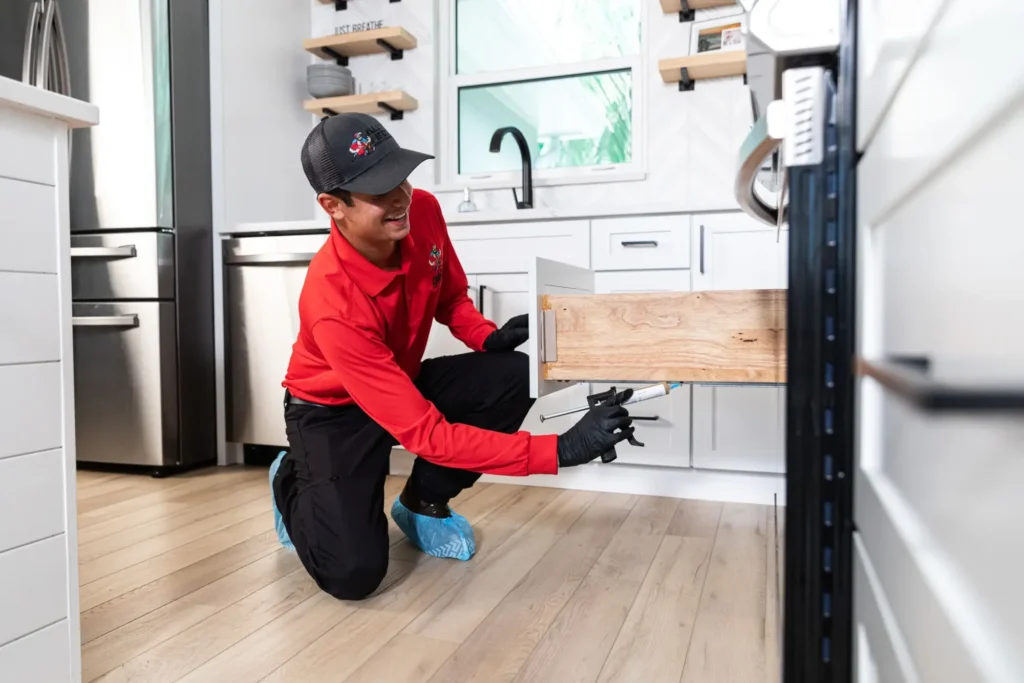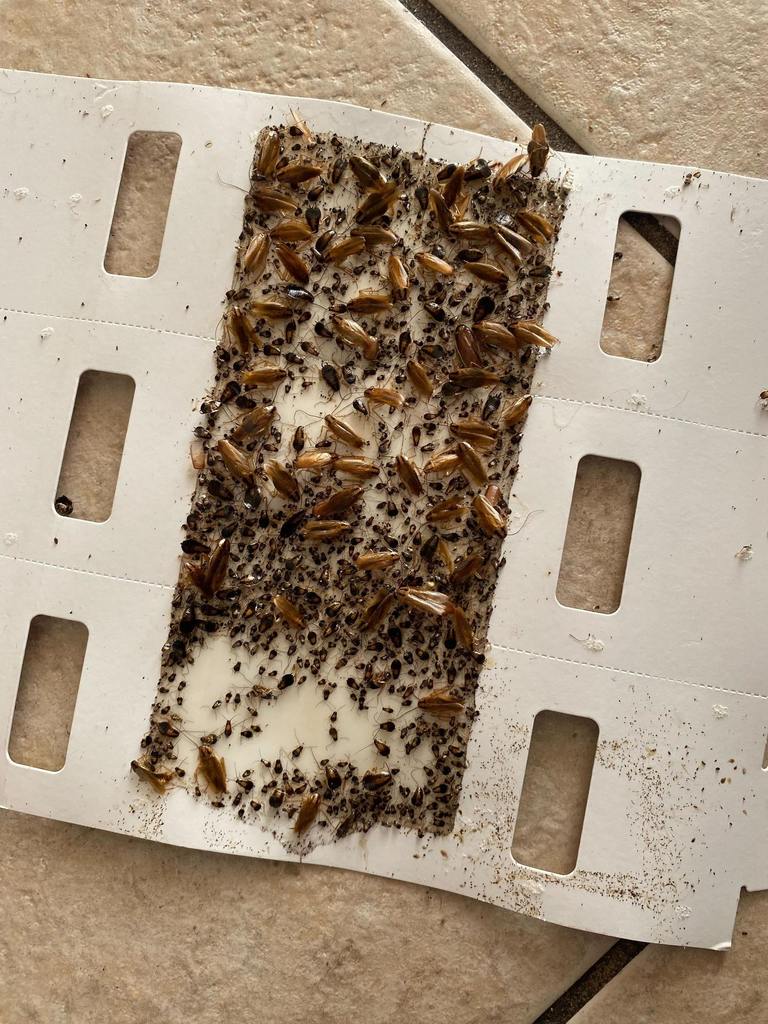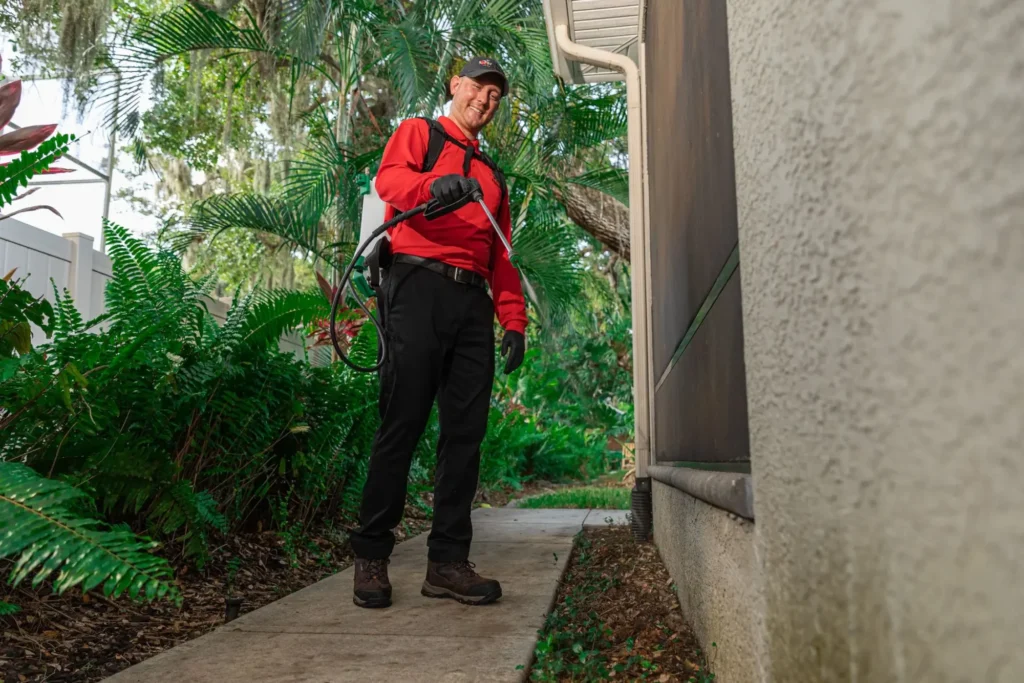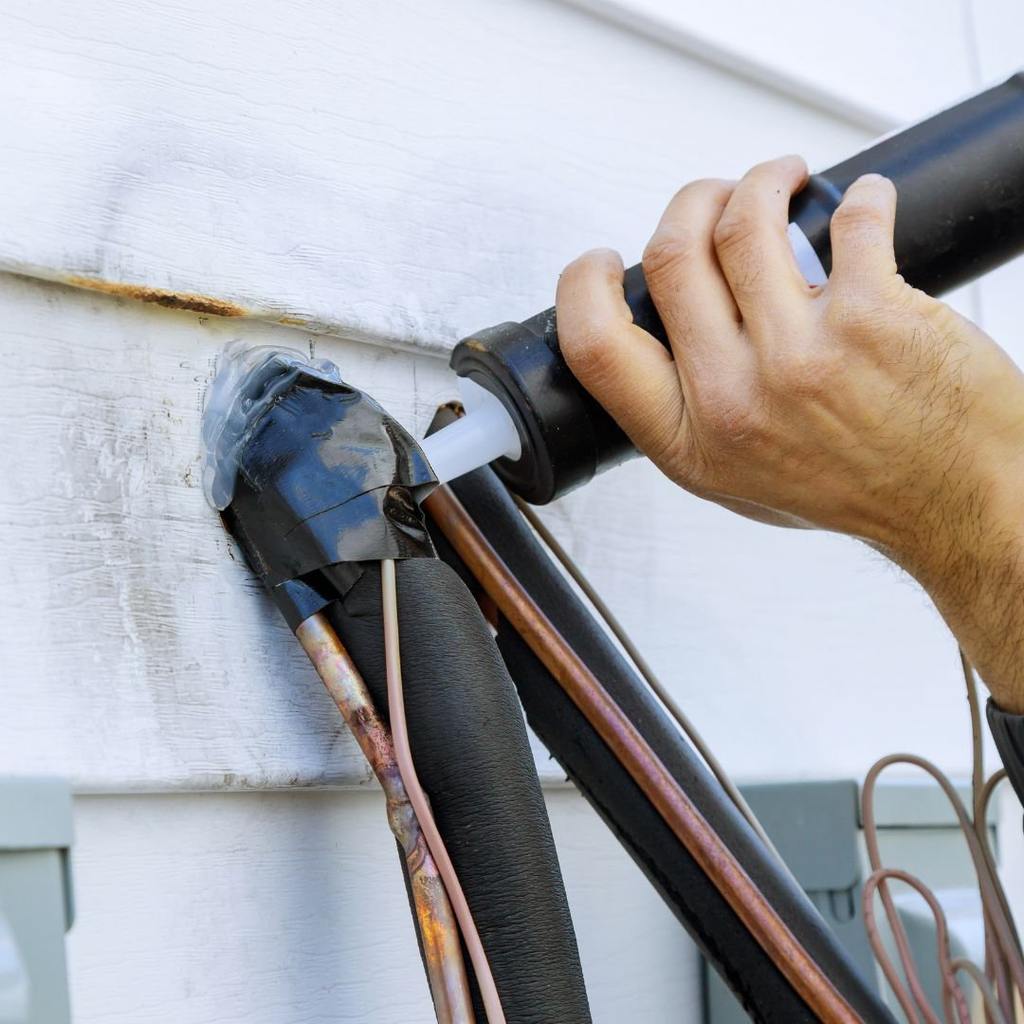
Cockroach Control in Montgomery County, TX
Montgomery County, Texas, with its humid subtropical climate and diverse landscapes, provides an ideal environment for cockroaches to thrive. From the bustling streets of Conroe to the wooded areas of The Woodlands, these resilient pests can become a persistent problem for homeowners and businesses alike. The county's mix of urban and rural areas, combined with its warm temperatures and frequent rainfall, creates perfect conditions for various cockroach species to flourish.
If you're dealing with a cockroach infestation in your Montgomery County home, you're not alone. These unwanted guests can quickly turn your living space into a nightmare, carrying bacteria and potentially triggering allergies or asthma in some individuals. The good news is that effective solutions are available to combat this problem. By reaching out to All U Need Pest Control at (888) 239-Bugs (888-239-2847), you can take the first step towards reclaiming your home from these persistent pests.
In this comprehensive guide, we'll explore the most effective methods for cockroach control in Montgomery County, TX, tailored to the unique challenges posed by our local environment and common cockroach species.
Pest Control Services in Montgomery County, TX

How to Get Rid of Cockroaches in Montgomery County, TX
Eliminating cockroaches from your Montgomery County home requires a multi-faceted approach. Given the area’s humid climate and diverse ecosystems, from the pine forests of Sam Houston National Forest to the suburban landscapes of Conroe, cockroaches have plenty of opportunities to thrive. Here’s how you can effectively combat these pests:
Cockroach Baiting
Baiting is a highly effective method for controlling cockroach populations in Montgomery County homes. This technique involves strategically placing pesticide-infused bait stations in areas where cockroaches are likely to frequent. In our humid climate, these areas often include dark, moist spaces like under sinks, behind appliances, and in basement corners.
The bait works by attracting cockroaches with a food source that’s been laced with slow-acting insecticides. When cockroaches consume the bait, they return to their hiding spots, where they eventually die. But before they do, they may spread the insecticide to other roaches through their droppings or by being eaten themselves, creating a domino effect that can significantly reduce the population.
In Montgomery County, where German and American cockroaches are common, baiting can be particularly effective. These species are known to live in large colonies, so the bait’s ability to spread through the population is especially useful. Moreover, baiting is a low-impact method that minimizes the use of sprays, making it safer for homes with children and pets.
Cockroach Insecticide
While baiting is often the first line of defense, sometimes a more direct approach is necessary, especially for severe infestations common in older homes or in areas near water sources like Lake Conroe. This is where insecticides come into play.
Insecticides work by directly targeting the cockroaches’ nervous systems. In Montgomery County, where the warm, humid climate can lead to rapid cockroach reproduction, fast-acting insecticides can quickly bring an infestation under control. However, it’s crucial to use these products carefully and strategically.
There are several types of insecticides available:
- Contact killers These work immediately upon contact with the cockroach.
- Residual sprays These leave a lasting effect, continuing to kill cockroaches for weeks or even months after application.
- Dust formulations These are particularly useful for cracks and crevices where cockroaches hide.
When applying insecticides in your Montgomery County home, it’s important to focus on areas where cockroaches are likely to hide or travel. This includes along baseboards, in cabinet corners, and around plumbing fixtures. Given our area’s propensity for high humidity, pay special attention to bathrooms, kitchens, and laundry rooms where moisture tends to accumulate.
Remember, while insecticides can be effective, they should be used as part of a broader pest management strategy. Overreliance on chemicals can lead to resistance in cockroach populations, making future control efforts more challenging.
Integrated Pest Management Strategies
In Montgomery County, where our diverse environments range from urban centers to wooded suburbs, an Integrated Pest Management (IPM) approach is often the most effective long-term solution for cockroach control. IPM combines various control methods to create a comprehensive, sustainable pest management plan.
Here’s how IPM can be applied to cockroach control in your Montgomery County home:
- Inspection and Monitoring Regularly inspect your home for signs of cockroach activity. In our climate, pay special attention to damp areas and spaces near food sources.
- Sanitation Keep your home clean and dry. In Montgomery County’s humid environment, controlling moisture is crucial. Fix leaky pipes, use dehumidifiers in basements, and ensure proper ventilation in bathrooms and kitchens.
- Exclusion Seal entry points to prevent cockroaches from entering your home. This is particularly important in older homes or those near wooded areas where outdoor cockroach populations may be high.
- Habitat Modification Reduce clutter and eliminate hiding spots. In our area, this might include keeping firewood away from the house and trimming vegetation near the foundation.
- Biological Control Encourage natural predators of cockroaches. While this is more applicable outdoors, maintaining a healthy garden can help keep outdoor cockroach populations in check.
- Chemical Control Use baits and insecticides judiciously as part of your overall strategy.
- Education Learn about cockroach behavior and biology to better understand how to control them. This is especially important given the variety of cockroach species we encounter in Montgomery County.
By implementing these strategies, you can create an environment that’s inhospitable to cockroaches while minimizing the use of chemicals. This approach is not only effective but also more sustainable in the long run.

Cockroach Treatment in Montgomery County, TX
When it comes to treating a cockroach infestation in Montgomery County, it’s important to tailor your approach to our specific local conditions. Here’s a step-by-step guide to effectively treating your home:
- Thorough Inspection Begin with a comprehensive inspection of your property. In Montgomery County, where we have a mix of urban and rural areas, cockroaches can enter homes from various sources. Check both indoor and outdoor areas, paying special attention to damp locations like crawl spaces, basements, and areas around air conditioning units.
- Identify the Species Different cockroach species require different treatment approaches. In our area, you’re likely to encounter German, American, and smoky brown cockroaches. Identifying the species will help you target your treatment more effectively.
- Clean and Declutter Before applying any treatments, thoroughly clean your home. In our humid climate, pay extra attention to areas where moisture accumulates. Remove clutter, especially in basements and garages, as these provide hiding spots for cockroaches.
- Seal Entry Points Given Montgomery County’s diverse landscape, from the piney woods to suburban developments, cockroaches can find numerous ways into your home. Seal cracks in the foundation, gaps around pipes, and any other potential entry points.
- Apply Baits Place baits in areas where you’ve observed cockroach activity. In our climate, focus on warm, humid areas like under sinks, behind appliances, and in basement corners.
- Use Insecticides Strategically Apply residual insecticides to baseboards, cracks, and crevices. In Montgomery County’s humid environment, use products that are effective in damp conditions.
- Treat Outdoor Areas Don’t forget to treat the exterior of your home, especially if you live near wooded areas or water sources like Lake Conroe. This can help prevent reinfestation.
- Follow-Up Treatments Given our climate’s ability to support large cockroach populations, follow-up treatments are often necessary. Plan for regular inspections and reapplications as needed.
- Maintain Preventive Measures After treatment, maintain good sanitation practices and continue monitoring for signs of cockroach activity.
Remember, effective cockroach control in Montgomery County often requires persistence and a combination of methods. If you’re dealing with a severe infestation, or if DIY methods aren’t providing the results you need, it may be time to consult with a professional pest control service familiar with our local conditions.

Signs of a Cockroach Infestation in Montgomery County, TX
Recognizing the signs of a cockroach infestation early can make a significant difference in how quickly and effectively you can address the problem. In Montgomery County, where our climate supports year-round cockroach activity, it’s crucial to stay vigilant. Here are the key signs to watch for:
- Live Cockroaches The most obvious sign is seeing live cockroaches. In Montgomery County, you’re most likely to spot them at night, especially in kitchens and bathrooms. If you see cockroaches during the day, it often indicates a severe infestation.
- Droppings Cockroach droppings resemble coffee grounds or black pepper. In our humid climate, you might notice these more frequently in damp areas like under sinks or in basement corners.
- Egg Cases Cockroach egg cases, or oothecae, are small, brown, and oval-shaped. In Montgomery County homes, you might find these in hidden areas like behind appliances or in closets.
- Musty Odor A strong, musty odor can indicate a cockroach infestation. This smell is particularly noticeable in enclosed spaces like cabinets or pantries.
- Smear Marks In areas with high humidity, like many parts of Montgomery County, you might notice dark, irregular smear marks along walls or in corners where cockroaches frequently travel.
- Cast Skins As cockroaches grow, they shed their exoskeletons. Finding these light brown, empty shells is a clear sign of an active infestation.
- Damage to Food Packaging Check your pantry for signs of cockroaches chewing through food packaging, especially in items that have been undisturbed for a while.
- Unexplained Allergy Symptoms In some cases, cockroach infestations can trigger allergy symptoms. If you notice increased respiratory issues or skin irritations without an apparent cause, cockroaches could be the culprit.

How to Check Your Montgomery County Home for Cockroaches
To effectively check your Montgomery County home for cockroaches, follow these steps:
- Night Inspections Cockroaches are nocturnal, so conduct inspections at night using a flashlight. Focus on kitchens, bathrooms, and basements.
- Check Moisture-Prone Areas Given our humid climate, pay special attention to areas prone to dampness. This includes under sinks, around pipes, and in laundry rooms.
- Inspect Dark, Warm Spaces Look in and behind appliances, especially refrigerators and stoves. Don’t forget to check inside cabinets and drawers.
- Examine Entry Points Inspect areas where utilities enter your home, as well as around doors and windows. In Montgomery County, where we have a mix of older and newer homes, pay extra attention to potential entry points in the foundation or walls.
- Look for Droppings Use your flashlight to look for cockroach droppings in corners, along baseboards, and in other hidden areas.
- Check Outdoor Areas Inspect your yard, particularly areas close to the house. In our region, pay attention to woodpiles, leaf litter, and areas with dense vegetation.
- Use Sticky Traps Place sticky traps in suspected problem areas to monitor cockroach activity. Check these traps regularly.
- Inspect Rarely Used Areas Don’t forget to check areas that aren’t frequently used, such as guest rooms, attics, or storage spaces.
- Look for Water Sources In Montgomery County, where we often deal with high humidity, check for any standing water or leaks that might attract cockroaches.
- Use a Flushing Agent In severe cases, you might want to use a flushing agent in suspected hiding spots to force cockroaches into the open for easier detection.

What Do Cockroaches Look Like in Montgomery County, TX?
In Montgomery County, you’re likely to encounter several species of cockroaches. Knowing what each species looks like can help you identify the type of infestation you’re dealing with and choose the most effective treatment method.
Smoky Brown Cockroach
The smoky brown cockroach is a common sight in Montgomery County, particularly in wooded areas and urban outskirts like Conroe and The Woodlands. These large insects, typically 1.25 to 1.5 inches long, have a mahogany or dark brown glossy appearance with wings extending beyond their body length. While often found outdoors, they can invade homes during dry spells. Our humid climate attracts them to moist environments such as mulch, leaf litter, and around air conditioning units.
American Cockroach
The American cockroach, or palmetto bug, is one of the largest cockroach species in Montgomery County. Measuring 1.5 to 2 inches long, these reddish-brown insects have a distinctive yellowish figure-eight pattern on their head. They’re capable of short flights and often inhabit damp areas like basements, sewers, and drainage pipes. In Montgomery County, they’re particularly common in older buildings and homes near water sources like Lake Conroe or the San Jacinto River.
Australian Cockroach
The Australian cockroach, while less common, can be found in Montgomery County, especially in greenhouse environments and areas with lush vegetation. About 1.25 inches long, they’re dark brown with light yellow edges on their thorax and wings. These outdoor-dwelling insects can invade homes, particularly in green areas like The Woodlands. They closely resemble American cockroaches but are slightly smaller.
German Cockroach
The German cockroach is Montgomery County’s most common indoor cockroach species. These small, light brown to tan insects measure 0.5 to 0.6 inches long and have two dark parallel stripes from head to wings. As rapid breeders, infestations are difficult to control. They’re often found in kitchens and bathrooms, especially in multi-unit housing. Our warm climate allows them to reproduce year-round, making early detection crucial.
Florida Woods Cockroach
The Florida Woods cockroach, while less common, can be found in Montgomery County’s wooded areas. These large, dark brown to black insects measure 1.5 to 2 inches long and are often mistaken for American cockroaches. With a more rounded appearance, they primarily dwell outdoors in decaying wood and leaf litter.
In Montgomery County, you might encounter these cockroaches in areas near the Sam Houston National Forest or in heavily wooded residential areas.

Eco-friendly Solutions for Cockroach Control
In Montgomery County, where we value our natural environment from the piney woods to the shores of Lake Conroe, eco-friendly cockroach control solutions are increasingly popular. These methods can be effective while minimizing the impact on the environment and reducing exposure to harsh chemicals. Here are some eco-friendly approaches you can try:
- Diatomaceous Earth This natural powder is made from fossilized algae and works by dehydrating cockroaches. Sprinkle it in areas where cockroaches travel, such as along baseboards and in cracks and crevices.
- Boric Acid A naturally occurring compound, boric acid is toxic to cockroaches but has low toxicity for humans and pets when used correctly. Mix it with sugar or flour to create a bait that cockroaches will eat and take back to their nests.
- Catnip Studies have shown that catnip can be an effective cockroach repellent. Grow catnip plants around your home or use catnip oil as a natural deterrent.
- Cucumber Slices Believe it or not, cockroaches dislike the smell of cucumbers. Place cucumber slices in areas where you’ve seen cockroach activity.
- Bay Leaves The strong scent of bay leaves can deter cockroaches. Place whole bay leaves in cabinets, pantries, and other areas where cockroaches might hide.
- Proper Food Storage Use airtight containers to store food, especially in pantries. This denies cockroaches easy access to food sources.
- Regular Cleaning Maintain a clean home by vacuuming regularly, wiping down surfaces, and keeping your kitchen free of crumbs and spills.
- Fix Leaks In our humid climate, controlling moisture is crucial. Repair any leaky pipes or faucets promptly.
- Natural Predators Encourage natural cockroach predators in your yard, such as birds and lizards, by creating a wildlife-friendly garden.
Remember, while these eco-friendly methods can be effective, severe infestations may require more intensive treatment. Always consult with a pest control professional if you’re dealing with a large-scale cockroach problem.

Preventing Cockroaches in Montgomery County, TX
Prevention is key when it comes to cockroach control in Montgomery County. Our warm, humid climate provides an ideal environment for cockroaches year-round, making ongoing prevention efforts crucial. Here are some strategies tailored to our local conditions:
- Seal Entry Points Inspect the exterior of your home for cracks and crevices, paying special attention to areas where utilities enter. Use caulk or weatherstripping to seal these potential entry points.
- Manage Moisture Given our high humidity levels, controlling moisture is essential. Use dehumidifiers in damp areas like basements, fix leaky pipes promptly, and ensure proper ventilation in bathrooms and kitchens.
- Proper Food Storage Store food in airtight containers, including pet food. In our climate, even small amounts of exposed food can quickly attract cockroaches.
- Regular Cleaning Maintain a consistent cleaning schedule, paying special attention to kitchens and bathrooms. Vacuum regularly to remove crumbs and potential cockroach eggs.
- Declutter Reduce clutter in your home, especially in storage areas like garages and basements. Cockroaches love to hide in cardboard boxes, so consider using plastic storage containers instead.
- Yard Maintenance Keep your yard tidy by removing leaf litter, trimming vegetation away from your home’s foundation, and storing firewood away from the house.
- Garbage Management Use trash cans with tight-fitting lids and dispose of garbage regularly. In our warm climate, garbage can quickly become a breeding ground for pests.
- Inspect Groceries Before bringing groceries into your home, check for any signs of cockroach infestation, especially in cardboard packaging.
- Address Standing Water Eliminate sources of standing water around your property, including in potted plants, birdbaths, and clogged gutters.
- Regular Inspections Conduct regular inspections of your home, paying special attentionto dark, warm, and moist areas where cockroaches are likely to hide.
- Use Natural Repellents Consider using natural repellents like bay leaves or cucumber slices in areas prone to cockroach activity.
- Professional Preventive Treatments Consider scheduling regular preventive treatments with a pest control professional, especially if you live in an area of Montgomery County known for cockroach problems.
By implementing these prevention strategies, you can significantly reduce the likelihood of a cockroach infestation in your Montgomery County home. Remember, consistency is key when it comes to cockroach prevention in our climate.

Exterminate Cockroaches From Your Montgomery County Home with All U Need Pest Control
Dealing with cockroaches in Montgomery County doesn’t have to be a constant battle. With the right approach and professional help, you can effectively eliminate these pests and prevent future infestations. At All U Need Pest Control, we understand the unique challenges posed by our local climate and environment when it comes to cockroach control.
Our team of experts is well-versed in the behavior patterns of common cockroach species in Montgomery County, from the German cockroaches often found in Conroe apartments to the larger American cockroaches that might invade homes near Lake Conroe. We use this local knowledge to develop targeted, effective treatment plans that address your specific cockroach problem.
We’re committed to using eco-friendly pest control methods whenever possible, ensuring the safety of your family, pets, and the beautiful Montgomery County environment we all cherish. Our integrated pest management approach combines the most effective control methods with preventive strategies, giving you long-lasting results.
Don’t let cockroaches take over your Montgomery County home. Contact All U Need Pest Control today at (888) 239-Bugs (888-239-2847) to schedule a comprehensive cockroach inspection and treatment plan. Our friendly team is ready to answer your questions and provide the expert service you need to reclaim your home from these persistent pests. Remember, when it comes to cockroach control in Montgomery County, we’re the local experts you can trust!
Location Contact:
13330 Telge Road Suite 208 Cypress, TX 77429
Get Directions for 13330 Telge Road Suite 208Cypress, TX 77429 on Google Maps281-845-2775
Call All "U" Need Pest Control